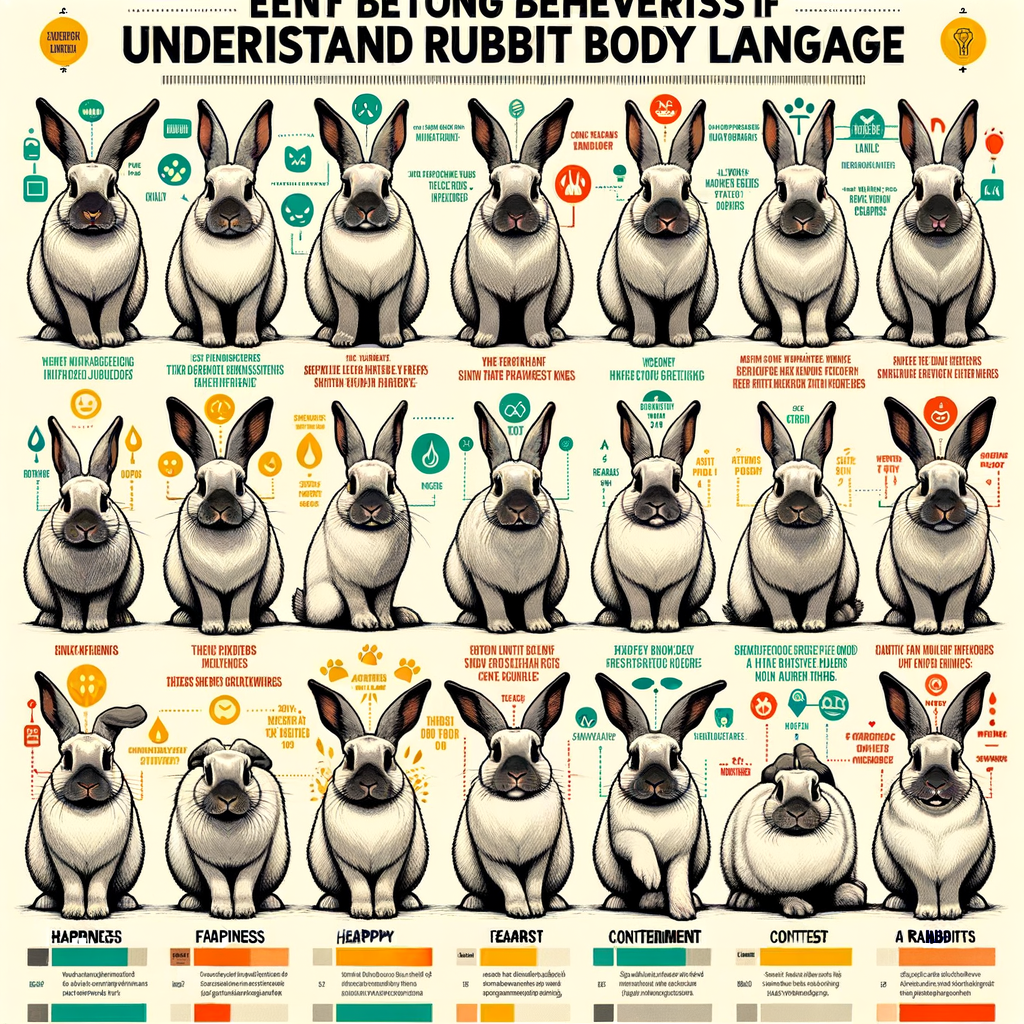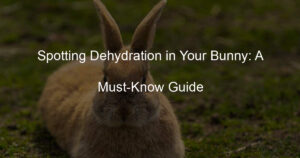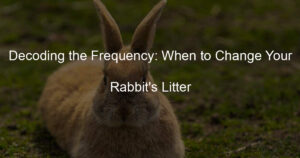
Introduction to Bunny Behavior
Understanding the behavior of our furry friends, the bunnies, is an exciting journey. Bunnies, also known as rabbits, exhibit a range of behaviors that communicate their feelings, needs, and moods. This section will provide an overview of bunny behavior and emphasize the importance of understanding rabbit body language.
- Overview of Bunny Behavior
- Importance of Understanding Rabbit Body Language
Rabbits are social animals that enjoy the company of their kind and humans. They are crepuscular, meaning they are most active during the dawn and dusk. Bunnies communicate using a variety of signals, including body movements, facial expressions, and vocal sounds. They express happiness by hopping around and doing a twist mid-air, a behavior known as ‘binkying’. On the other hand, thumping their hind legs is a sign of fear or warning to others about potential danger.
Understanding rabbit body language is crucial for any bunny owner. It helps you to know when your bunny is happy, scared, or in need of something. For instance, if a rabbit’s ears are laid back against its body, it may be feeling threatened or scared. On the other hand, a rabbit that’s lying on its side or belly, fully relaxed, is a content and happy bunny. Recognizing these signs can help you provide the best care for your bunny, ensuring it lives a happy and healthy life.
As we delve deeper into this topic, we will explore more about rabbit body language, signs of a happy rabbit, recognizing fear in rabbits, and rabbit contentment signals. We will also look at some case studies, key takeaways, and conclude with a summary of what we’ve learned.
Understanding Rabbit Body Language
Understanding the body language of rabbits is crucial for any rabbit owner. It’s their primary way of communicating their feelings and needs. By learning to interpret these signals, you can better understand your bunny’s emotions and respond appropriately.
Interpreting Rabbit Emotions
Rabbits, like humans, have a range of emotions. They can feel happy, scared, angry, or content. But unlike humans, rabbits can’t use words to express how they feel. Instead, they use their bodies. Let’s explore how to read bunny body language and understand common signs and signals.
- How to read bunny body language
- Common signs and signals
Reading bunny body language involves observing their posture, ears, eyes, and tail. For example, a relaxed rabbit will have a loose body posture and half-closed eyes. On the other hand, a scared rabbit will have a stiff body, wide-open eyes, and ears pointed straight up.
Here are some common signs and signals in rabbit body language:
| Sign | Meaning |
|---|---|
| Thumping | The rabbit is scared or warning of danger. |
| Nose twitching | The rabbit is curious or excited. |
| Teeth grinding | The rabbit is content or in pain (loud grinding). |
| Ear flicking | The rabbit is annoyed or trying to get rid of a fly. |
Remember, every rabbit is unique. They may show these signs differently or have their own unique signals. The key is to spend time with your bunny and observe their behavior in different situations. This will help you understand their body language better.
Signs of a Happy Rabbit
Understanding the signs of a happy rabbit is essential for every bunny owner. It helps you ensure that your pet is content and healthy. Let’s delve into the physical and behavioral signs of a happy rabbit.
Bunny Happiness Signs
There are two main ways to tell if your bunny is happy: through physical signs and behavioral signs. Let’s explore each of these in detail.
- Physical signs of happiness
- Relaxed body: A happy rabbit’s body is usually relaxed and not tense. The ears are typically up and forward, indicating interest and contentment.
- Binky: This is a unique bunny behavior where they jump in the air and twist their body and head in different directions. It’s a clear sign of joy and happiness.
- Purring: Yes, rabbits can purr, just like cats! They do this by lightly grinding their teeth, and it’s a sign that they’re happy and content.
- Behavioral signs of happiness
- Playfulness: Happy rabbits are playful. They enjoy exploring their environment and playing with their toys.
- Curiosity: A happy rabbit is a curious one. They love to explore new things and are always on the lookout for something interesting.
- Socializing: Rabbits are social animals. If your bunny is happy, they will enjoy spending time with you and other rabbits.
Rabbits express their happiness through various physical signs. These include:
Behavioral signs are another way to tell if your rabbit is happy. They include:
Remember, every rabbit is unique and may express happiness in different ways. The key is to spend time with your bunny and get to know their specific signs of happiness.
Recognizing Fear in Rabbits
Understanding your rabbit’s emotions is crucial for their well-being. Fear is a common emotion in rabbits, and recognizing it can help you provide a safer and more comfortable environment for your pet. Let’s delve into the signs of fear in rabbits.
Rabbit Fear Symptoms
Rabbits express fear through both physical and behavioral signs. It’s essential to be aware of these symptoms to ensure your rabbit’s health and happiness.
- Physical signs of fear
- Behavioral signs of fear
Rabbits show fear physically in various ways. They may have dilated pupils, indicating high stress or fear. Their ears may be laid back against their body, and their body may be stiff or shaking. Rapid breathing or panting is another sign of fear in rabbits. Additionally, they may thump their hind legs, a behavior rabbits use to warn others of danger.
Behavioral signs of fear in rabbits can be subtle or more obvious. Rabbits may hide or try to escape when they’re scared. They might also become less active or stop eating. Some rabbits may become more aggressive when they’re frightened, while others may freeze and not move at all. It’s important to note that these behaviors can also be signs of other issues, so it’s crucial to consult with a vet if you notice any changes in your rabbit’s behavior.
Recognizing fear in your rabbit is the first step to creating a safe and comfortable environment for them. Remember, each rabbit is unique and may show fear in different ways. Always observe your rabbit’s behavior and consult with a vet if you have any concerns.
Rabbit Contentment Signals
Understanding the signs of contentment in rabbits is crucial for every bunny owner. It helps ensure that your pet is happy and healthy. In this section, we will explore the physical and behavioral signs that indicate a content rabbit.
Signs of Contentment in Bunnies
Just like humans, rabbits express their feelings through physical and behavioral signs. Here are some of the most common signs of contentment in bunnies:
- Physical signs of contentment
- Relaxed body: A content rabbit will have a relaxed body posture. They often lay on their side or belly, with their legs stretched out.
- Half-closed eyes: When a rabbit is happy, they will often have half-closed eyes. This is a sign that they are relaxed and comfortable.
- Soft purring: Yes, rabbits can purr just like cats! A soft purring sound, often accompanied by tooth clicking, is a sign of a content rabbit.
- Behavioral signs of contentment
- Binkying: This is a unique rabbit behavior where they jump in the air and twist their body. This is a clear sign of a happy and content rabbit.
- Flopping: If your rabbit suddenly flops onto their side, don’t be alarmed. This is a sign of contentment. It means they feel safe and relaxed.
- Grooming: A content rabbit will often groom themselves or their bunny friends. This is a sign that they are comfortable in their environment.
Rabbits show their contentment through various physical signs. These include:
Behavioral signs are another way to tell if your rabbit is content. These include:
Observing these signs can help you ensure that your rabbit is content and happy. Remember, a happy rabbit is a healthy rabbit!
Case Studies
Let’s delve into some real-life examples to better understand bunny behavior. These case studies will provide us with valuable insights.
Case Study 1: Happy Bunny
Our first case study involves a pet rabbit named Thumper, who is known for his cheerful disposition. Let’s explore Thumper’s case in detail.
- Background of the case:
- Observations and findings:
Thumper is a two-year-old domestic rabbit who lives in a spacious hutch in his owner’s backyard. He has a balanced diet of hay, vegetables, and rabbit pellets. His owner ensures he gets plenty of exercise and social interaction.
During our observation, we noticed that Thumper often performs a behavior known as ‘binkying’. This is a spontaneous leap into the air, often accompanied by a twist or kick. This is a clear sign of a happy rabbit. Thumper also frequently purrs when being petted, another indication of contentment. His ears are usually upright, and he often approaches humans without hesitation, indicating trust and comfort.
In conclusion, Thumper’s case demonstrates that a balanced diet, ample space, and regular social interaction are key factors in promoting happiness in rabbits.
Case Study 2: Fearful Rabbit
- Background of the case:
Meet Fluffy, a two-year-old domestic rabbit who was adopted from a local shelter. Fluffy’s previous owners had not spent much time with her, which resulted in her becoming fearful of humans. She would often hide in her cage and show signs of fear whenever anyone approached.
- Observations and findings:
Observations of Fluffy’s behavior were made over a period of three months. It was noted that Fluffy would often flatten her body against the ground, a common sign of fear in rabbits. Her ears were also usually pinned back, and she would thump her hind legs frequently – another indication of fear.
Fluffy’s fear was not only limited to humans. She would also display signs of fear when exposed to sudden noises or movements. This was evident when she would startle easily and attempt to hide.
Signs of Fear Frequency of Occurrence Body flattening Daily Ears pinned back Daily Thumping hind legs Several times a week Startling easily Several times a week It was clear that Fluffy was living in a constant state of fear. The goal was to help Fluffy feel safe and secure in her environment, and to help her build trust with humans. With patience, understanding, and gentle care, Fluffy began to show signs of improvement. She is still a work in progress, but her case serves as a reminder of the importance of understanding and responding to rabbit body language.
Key Takeaways
As we conclude our exploration of bunny behavior, it’s crucial to highlight the key insights we’ve gathered. Understanding these will not only enhance your relationship with your pet rabbit but also ensure their overall well-being. Let’s take a moment to review the most important points.
-
Importance of Understanding Bunny Behavior
Understanding bunny behavior is essential for any rabbit owner. Rabbits, like any other pets, have their unique ways of expressing their feelings. Recognizing these behaviors can help you provide a more comfortable and safe environment for your pet. It can also help you identify any potential health issues early on. For instance, a change in behavior could indicate that your rabbit is in pain or discomfort. Therefore, being aware of your rabbit’s normal behavior can be a lifesaver.
-
How to Recognize Signs of Happiness, Fear, and Contentment in Rabbits
Recognizing signs of happiness, fear, and contentment in rabbits is also crucial. A happy rabbit may show signs such as binkying (a unique bunny jump), purring, or relaxing with their feet stretched out. On the other hand, a fearful rabbit may thump their hind legs, hide, or try to escape. Content rabbits often grind their teeth softly and loaf (sit with their feet tucked under their body). By recognizing these signs, you can ensure your rabbit is happy and content, and take action if they show signs of fear or distress.
Remember, every rabbit is unique and may express their feelings differently. The key is to spend time with your pet, observe their behavior, and respond to their needs accordingly. This will not only make your rabbit feel loved and secure, but also create a stronger bond between you and your furry friend.
Conclusion
As we wrap up our discussion on bunny behavior, it’s essential to remember the key points we’ve covered. Understanding your rabbit’s emotions and behaviors can significantly enhance your relationship with your furry friend, making it more rewarding for both of you.
- Recap of the importance of understanding bunny behavior
- Final thoughts on interpreting rabbit emotions
Understanding bunny behavior is crucial for any rabbit owner. It helps you to provide the best care for your pet, ensuring they are happy, healthy, and content. Recognizing signs of happiness, fear, and contentment in your rabbit can help you respond appropriately to their needs. This understanding can prevent misunderstandings and potential harm, leading to a more harmonious coexistence.
Interpreting rabbit emotions might seem challenging at first, but with time and patience, you can learn to understand your bunny’s unique language. Remember, each rabbit is an individual with its own personality and behavior patterns. Paying close attention to their body language and behavior changes can provide valuable insights into their emotional state. In the end, the effort you put into understanding your bunny’s emotions will be rewarded with a deeper, more fulfilling bond with your pet.
In conclusion, understanding and interpreting bunny behavior is a rewarding journey that enhances your relationship with your pet. It’s a language that requires patience and observation, but once mastered, it opens up a whole new world of interaction between you and your bunny. So, keep observing, keep learning, and enjoy the wonderful journey of bunny parenthood.




